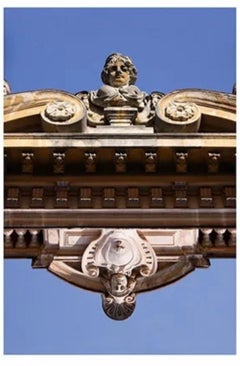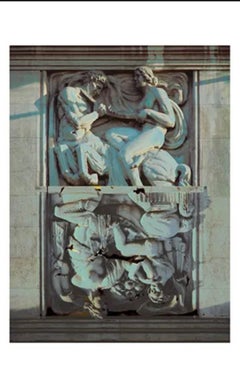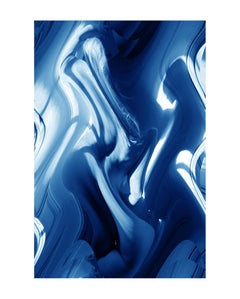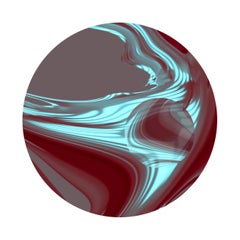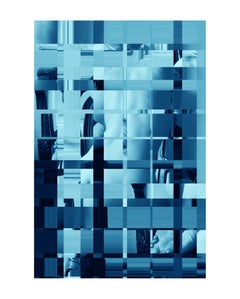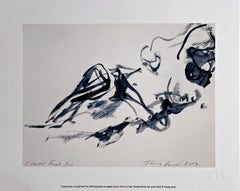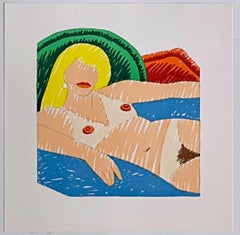Paula Craioveanu Studio Prints and Multiples
to
1
7
Overall Width
to
Overall Height
to
7
7
7
1
1
1
7
7
6
1
Guardians signed #2/20 Paula Craioveanu Photograph 20x16in in mat 28x20in
By Paula Craioveanu
Located in Forest Hills, NY
UNDER THE SKIN 5
Surreal Nude, part of my "Under the Skin" series.
Printed on Hahnemuhle art photo paper with white borders, size is 20x16in. In mat overall size 28x20in.
This par...
Category
2010s Surrealist Nude Prints
Materials
Photographic Paper
Centaurs signed #2/20 Paula Craioveanu Photograph 20x16in in mat 28x20in
By Paula Craioveanu
Located in Forest Hills, NY
UNDER THE SKIN 5
Surreal Nude, part of my "Under the Skin" series.
Printed on Hahnemuhle art photo paper with white borders, size is 20x16in. In mat overall size 28x20in.
This par...
Category
2010s Surrealist Nude Prints
Materials
Photographic Paper
Guardian signed #2/20 Paula Craioveanu Photograph 20x16in in mat 28x20in
By Paula Craioveanu
Located in Forest Hills, NY
UNDER THE SKIN 5
Surreal Nude, part of my "Under the Skin" series.
Printed on Hahnemuhle art photo paper with white borders, size is 20x16in. In mat overall size 28x20in.
This par...
Category
2010s Surrealist Nude Prints
Materials
Photographic Paper
Under the Skin 5 signed #2/20 Paula Craioveanu Photograph 20x16in in mat 28x20in
By Paula Craioveanu
Located in Forest Hills, NY
UNDER THE SKIN 5
Surreal Nude, part of my "Under the Skin" series.
Printed on Hahnemuhle art photo paper with white borders, size is 20x16in. In mat overall size 28x20in.
This par...
Category
2010s Surrealist Nude Prints
Materials
Photographic Paper
UNDER THE SKIN 3 signed #20/20 by Paula Craioveanu Surreal Nude Photography
By Paula Craioveanu
Located in Forest Hills, NY
Under the Skin #3. Surreal Nude, part of my "Under the Skin" series.
Printed on Hahnemuhle art photo paper with white borders, size is 12.5x12.5in.This particular one is signed and...
Category
2010s Surrealist Nude Prints
Materials
Photographic Paper
PICTOPOETRY 3 signed #20/20 by Paula Craioveanu Photograph 20x16in in mat 28x20
By Paula Craioveanu
Located in Forest Hills, NY
PICTOPOETRY 3 signed #20/20 by Paula Craioveanu Photograph 20x16in in mat 28x20
Surreal Nude, part of my "Pictopoetry" series.
Printed on Hahnemuhle art photo paper with white bord...
Category
2010s Surrealist Nude Prints
Materials
Photographic Paper
PICTOPOETRY 2 signed #2/20 by Paula Craioveanu Photograph 20x16in in mat 28x20in
By Paula Craioveanu
Located in Forest Hills, NY
Surreal Nude, part of my "Pictopoetry" series.
Printed on Hahnemuhle art photo paper with white borders
This particular one is signed and numbered 2 of 20 (edition of 20).
Has been...
Category
2010s Surrealist Nude Prints
Materials
Photographic Paper
Related Items
I Could Feel You, Tracey Emin, rare 2015 giclee print plate signed 300 gsm paper
By Tracey Emin
Located in New York, NY
Tracey Emin
I Could Feel You, 2015
Archival quality giclée print on Purcell Ultrasmooth Fine Art Paper 300 GSM
9 1/2 × 12 inches
Plate signed
Unframed
Rare archival quality, giclée reproduction of Tracey Emin's original gouache I Could Feel You, which is in the permanent modern art collection of the Tate. This was printed back in 2015 in an undisclosed limited edition, and is now long sold out.
More details about the original 2014 work are on the Tate Gallery's website as follows:
Emin, whose work is often candidly autobiographical, scrutinises her relationship with her own body, using drawing...
Category
2010s Contemporary Abstract Prints
Materials
Giclée
Shiny Nude (Stealingworth, 33) silkscreen on kromekote paper + envelope 917/1000
By Tom Wesselmann
Located in New York, NY
Tom Wesselmann
Shiny Nude (Stealingworth, 33), 1977
Silkscreen on glossy cast-coated Kromekote paper
8 × 8 inches
Edition of 1000 (917/1000)
Pencil numbered...
Category
1970s Pop Art Nude Prints
Materials
Screen, Paper
Pablo Picasso ( 1881 – 1973 ) – hand-signed etching on wove paper – 1968
By Pablo Picasso
Located in Varese, IT
Grosse Prostituée, Sorcière à la Chouette et Voyageur en Sabots ( Ref: Bloch 1760)
etching on wove paper, Edited in 1968
Limited edition of 50 copies
Current copy numbered: 37/50 on...
Category
1960s Cubist Nude Prints
Materials
Paper, Etching
$8,511
H 16.93 in W 19.69 in D 2.37 in
De l'Origine des Espèces par Voie de Sélection Irrationelle: Buste de femme
By Man Ray
Located in New York, NY
A very good impression of this color lithograph. Signed and numbered 51/180 in pencil. Printed by Mourlot, Paris. Published by Leon Amiel, New York, and XXe Siècle, Paris. From the s...
Category
1970s Modern Abstract Prints
Materials
Color, Lithograph
$2,500
H 16.25 in W 12.75 in
Femme Allongee, Cubist Lithograph after Pablo Picasso
By Pablo Picasso
Located in Long Island City, NY
In this muted but highly-abstracted print, Pablo Picasso represents a reclining female figure. Focusing only on the necessary elements of the subject, the artist represents the femal...
Category
Late 20th Century Cubist Abstract Prints
Materials
Lithograph
German Surrealist Hans Bellmer Etching Engraving Print Cecile Reims Surrealism
By Hans Bellmer
Located in Surfside, FL
After Hans Bellmer (German, 1902-1975)
Surrealist engraving, etching
after drawings from a 1942 notebook,
engraved in 1974-75 by Cecile Reims
Printed by L'Atelier de Chalcographie du Louvre, Paris,
Having printed monogram lower left in plate, pencil notations and #7/10 and 'Musee du Louvre' blindstamp verso
Dimensions: Sheet 11 X 7.5, Plate size 6.5 X 4
Hans Bellmer ( 1902 – 1975) was a Polish born German artist, best known for his drawings, etchings that illustrates the 1940 edition of Histoire de l’œil, and the life-sized female sculpture mannequin dolls he produced in the mid-1930s. Historians of art and photography also consider him a Surrealist photographer.
Bellmer was born in the city of Kattowitz, then part of the German Empire (now Katowice, Poland). Up until 1926, he worked as a draftsman for his own advertising company.
Bellmer is most famous for the creation of a series of dolls as well as photographs of them. He was influenced in his choice of art form in part by reading the published letters of Oskar Kokoschka (Der Fetisch, 1925) and Surrealism. Bellmer's puppet doll project is also said to have been catalysed by a series of events in his personal life.
Hans Bellmer takes credit for provoking a physical crisis in his father and brings his own artistic creativity into association with childhood insubordination and resentment toward a severe and humorless paternal authority. Perhaps this is one reason for the nearly universal, unquestioning acceptance in the literature of Bellmer's promotion of his art as a struggle against his father, the police, and ultimately, fascism and the state. Events of his personal life also including meeting a beautiful teenage cousin in 1932 (and perhaps other unattainable beauties), attending a performance of Jacques Offenbach's Tales of Hoffmann (in which a man falls tragically in love with an automaton), and receiving a box of his old toys. After these events, he began to actually construct his first dolls. In his works, Bellmer explicitly sexualized the doll as a young girl (his work bears connection to the works of Bathus). Hirschfeld has claimed (without further argumentation) that Bellmer initiated his doll project to oppose the fascism of the Nazi Party by declaring that he would make no work that would support the new German state. Represented by mutated forms and unconventional poses, his dolls (according to this view) were directed specifically at the cult of the perfect body then prominent in Germany.
He visited Paris in 1935 and made contacts there, such as Paul Éluard, but returned to Berlin because his wife Margarete was dying of tuberculosis. He was part of the circle of Surrealist luminaries such as Man Ray, Marcel Duchamp, Max Ernst, Joan Miro, André Masson, René Magritte, Alberto Giacometti and Salvador Dali as well as women artists—such as Frida Kahlo, Dorothea Tanning and Leonora Carrington.
Bellmer produced the first doll in Berlin in 1933. Long since lost, the assemblage can nevertheless be correctly described thanks to approximately two dozen photographs Bellmer took at the time of its construction. Standing about fifty-six inches tall, the doll consisted of a modeled torso made of flax fiber, glue, and plaster; a mask-like head of the same material with glass eyes and a long, unkempt wig; and a pair of legs made from broomsticks or dowel rods. One of these legs terminated in a wooden, club-like foot; the other was encased in a more naturalistic plaster shell, jointed at the knee and ankle. As the project progressed, Bellmer made a second set of hollow plaster legs, with wooden ball joints for the doll's hips and knees. There were no arms to the first sculpture, but Bellmer did fashion or find a single wooden hand, which appears among the assortment of doll parts the artist documented in an untitled photograph of 1934, as well as in several photographs of later work.
Bellmer's 1934 anonymous book, The Doll (Die Puppe), produced and published privately in Germany, contains 10 black-and-white photographs of Bellmer's first doll arranged in a series of "tableaux vivants" (living pictures). The book was not credited to him, as he worked in isolation, and his photographs remained almost unknown in Germany. Yet Bellmer's work was eventually declared "degenerate" (entartete kunst) by the Nazi Party, and he was forced to flee Germany to France in 1938, where Bellmer's work was welcomed by the Surrealists around Andre Breton.
He aided the French Resistance during the war by making fake passports. He was imprisoned in the Camp des Milles prison at Aix-en-Provence, a brickworks camp for German nationals, from September 1939 until the end of the Phoney War in May 1940.
After the war, Bellmer lived the rest of his life in Paris. Bellmer gave up doll-making and spent the following decades creating erotic drawings, etchings, sexually explicit photographs, paintings, and prints of pubescent girls. In 1954, he met Unica Zürn...
Category
20th Century Abstract Prints
Materials
Etching
Untitled Plate 7 from Paroles Peintes Suite - 1970s - Sebastián Matta
By Sebastian Matta
Located in Roma, IT
Untitled Plate 7 from Paroles Peintes Suite is an etching and aquatint on Japon paper.
Hand-signed and hand-numbered in pencil on the lower margin. Edition of 85 prints.
Perfect con...
Category
1970s Contemporary Abstract Prints
Materials
Etching, Aquatint
$1,241
H 15.16 in W 11.11 in D 0.04 in
German Surrealist Hans Bellmer Etching Engraving Print Cecile Reims Surrealism
By Hans Bellmer
Located in Surfside, FL
After Hans Bellmer (German, 1902-1975)
Surrealist engraving, etching
after drawings from a 1942 notebook,
engraved in 1974-75 by Cecile Reims
Printed by L'Atelier de Chalcographie du Louvre, Paris,
Having printed monogram lower left in plate, pencil notations verso Editioned from a very small edition of #7/10
'Musee du Louvre' blindstamp.
Dimensions: Sheet 11 X 7.5, Plate size 6.5 X 4
Hans Bellmer ( 1902 – 1975) was a Polish born German artist, best known for his drawings, etchings that illustrates the 1940 edition of Histoire de l’œil, and the life-sized female sculpture mannequin dolls he produced in the mid-1930s. Historians of art and photography also consider him a Surrealist photographer.
Bellmer was born in the city of Kattowitz, then part of the German Empire (now Katowice, Poland). Up until 1926, he worked as a draftsman for his own advertising company.
Bellmer is most famous for the creation of a series of dolls as well as photographs of them. He was influenced in his choice of art form in part by reading the published letters of Oskar Kokoschka (Der Fetisch, 1925) and Surrealism. Bellmer's puppet doll project is also said to have been catalysed by a series of events in his personal life.
Hans Bellmer takes credit for provoking a physical crisis in his father and brings his own artistic creativity into association with childhood insubordination and resentment toward a severe and humorless paternal authority. Perhaps this is one reason for the nearly universal, unquestioning acceptance in the literature of Bellmer's promotion of his art as a struggle against his father, the police, and ultimately, fascism and the state. Events of his personal life also including meeting a beautiful teenage cousin in 1932 (and perhaps other unattainable beauties), attending a performance of Jacques Offenbach's Tales of Hoffmann (in which a man falls tragically in love with an automaton), and receiving a box of his old toys. After these events, he began to actually construct his first dolls. In his works, Bellmer explicitly sexualized the doll as a young girl (his work bears connection to the works of Bathus). Hirschfeld has claimed (without further argumentation) that Bellmer initiated his doll project to oppose the fascism of the Nazi Party by declaring that he would make no work that would support the new German state. Represented by mutated forms and unconventional poses, his dolls (according to this view) were directed specifically at the cult of the perfect body then prominent in Germany.
He visited Paris in 1935 and made contacts there, such as Paul Éluard, but returned to Berlin because his wife Margarete was dying of tuberculosis. He was part of the circle of Surrealist luminaries such as Man Ray, Marcel Duchamp, Max Ernst, Joan Miro, André Masson, René Magritte, Alberto Giacometti and Salvador Dali as well as women artists—such as Frida Kahlo, Dorothea Tanning and Leonora Carrington.
Bellmer produced the first doll in Berlin in 1933. Long since lost, the assemblage can nevertheless be correctly described thanks to approximately two dozen photographs Bellmer took at the time of its construction. Standing about fifty-six inches tall, the doll consisted of a modeled torso made of flax fiber, glue, and plaster; a mask-like head of the same material with glass eyes and a long, unkempt wig; and a pair of legs made from broomsticks or dowel rods. One of these legs terminated in a wooden, club-like foot; the other was encased in a more naturalistic plaster shell, jointed at the knee and ankle. As the project progressed, Bellmer made a second set of hollow plaster legs, with wooden ball joints for the doll's hips and knees. There were no arms to the first sculpture, but Bellmer did fashion or find a single wooden hand, which appears among the assortment of doll parts the artist documented in an untitled photograph of 1934, as well as in several photographs of later work.
Bellmer's 1934 anonymous book, The Doll (Die Puppe), produced and published privately in Germany, contains 10 black-and-white photographs of Bellmer's first doll arranged in a series of "tableaux vivants" (living pictures). The book was not credited to him, as he worked in isolation, and his photographs remained almost unknown in Germany. Yet Bellmer's work was eventually declared "degenerate" (entartete kunst) by the Nazi Party, and he was forced to flee Germany to France in 1938, where Bellmer's work was welcomed by the Surrealists around Andre Breton.
He aided the French Resistance during the war by making fake passports. He was imprisoned in the Camp des Milles prison at Aix-en-Provence, a brickworks camp for German nationals, from September 1939 until the end of the Phoney War in May 1940.
After the war, Bellmer lived the rest of his life in Paris. Bellmer gave up doll-making and spent the following decades creating erotic drawings, etchings, sexually explicit photographs, paintings, and prints of pubescent girls. In 1954, he met Unica Zürn...
Category
20th Century Abstract Prints
Materials
Etching
Sans Titre, Surrealist Aquatint Etching by Roberto Matta
By Roberto Matta
Located in Long Island City, NY
This raucous scene by Latin American Surrealist Roberto Matta shows leaping nude figures flying through the air above what look like boulders. Their bodies are warped and stretched a...
Category
1960s Abstract Prints
Materials
Etching, Aquatint
$1,200 Sale Price
20% Off
H 22 in W 30 in
Sonia
By Man Ray
Located in New York, NY
A very good impression of this color etching with aquatint. Signed and numbered 29/75 in pencil. Printed by Jacques David, Paris. Co-published by Leon Am...
Category
1970s Modern Nude Prints
Materials
Color, Etching, Aquatint
Der Mord II (Liebespaar II)
By Otto Mueller
Located in New York, NY
A superb, richly-inked impression of this very scarce, important German Expressionist lithograph on smooth, cream wove paper. Edition of approximately only 20. Signed in pencil. Publ...
Category
1910s Expressionist Abstract Prints
Materials
Lithograph
Silkscreen Surrealist Pop Art Print "Pas De Deux"
By Michael Knigin
Located in Surfside, FL
Print without matte is 19" X 13".
Michael Knigin was born in 1942 in Brooklyn, NY. He attended and graduated from Tyler School of Art, Temple University. He received a Ford Founda...
Category
21st Century and Contemporary 85 New Wave Abstract Prints
Materials
Screen
